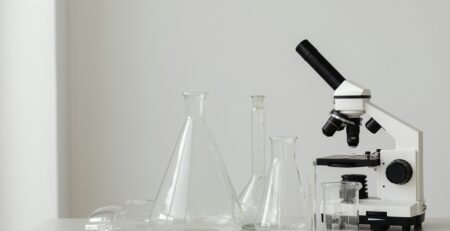4
Sep
Buchner Flasks and Filtration: Essential Guide for Australian Laboratories
Buchner flasks, also known as vacuum flasks or filter flasks, are core glassware in laboratory filtration systems. Constructed from thick-walled borosilicate glass (BORO 3.3), they are designed to withstand reduced pressure during vacuum filtration. Combined with a Buchner funnel, they enable efficient separation of solids and liquids in research, education, and industrial settings across Australia.
Why Buchner Flasks Are Essential
Buchner flasks are engineered with a heavy-duty side-arm and reinforced walls to handle vacuum filtration safely.
- Enable rapid separation of precipitates from solution.
- Essential in microbiology, organic chemistry, environmental testing, and industrial QC labs.
- Designed to prevent implosion under negative pressure.
- Available in a wide range of volumes to suit small-scale experiments and large-scale preparations.
The side-arm design allows direct connection to vacuum pumps or aspirators, improving speed and efficiency compared to gravity filtration.
Advantages of Borosilicate Glass Construction
Using BORO 3.3 borosilicate glass provides:
- High mechanical strength for vacuum use.
- Thermal resistance for sterilisation and heating applications.
- Excellent chemical durability against solvents, acids, and alkalis.
- Reusability, reducing costs and supporting sustainable laboratory practices.
Compared to plastic alternatives, borosilicate flasks ensure stability, long service life, and compliance with international standards.
Applications of Buchner Flasks in Filtration
- Microbiology: Sterile filtration of culture media.
- Analytical chemistry: Rapid isolation of solid products.
- Environmental science: Testing water samples for particulate contamination.
- Industrial QC labs: Separation of reaction by-products during chemical manufacturing.
Comparison Table: Buchner Flasks vs Standard Flasks
| Feature | Buchner Flask | Standard Erlenmeyer Flask |
|---|---|---|
| Wall Thickness | Heavy-duty, vacuum resistant | Standard thickness |
| Side Arm | Yes, for vacuum connection | No |
| Best Applications | Vacuum filtration, solid-liquid separation | General mixing and culturing |
| Pressure Resistance | Withstands reduced pressure | Not suitable for vacuum use |
| Material | BORO 3.3 Borosilicate Glass | BORO 3.3 Borosilicate Glass |
FAQs
Q1: Can a standard Erlenmeyer flask be used for vacuum filtration?
No, only Buchner flasks are designed with reinforced walls and a side arm to safely withstand vacuum pressure.
Q2: Are Buchner flasks autoclavable?
Yes, borosilicate Buchner flasks can be sterilised in autoclaves, making them suitable for microbiology and sterile filtration.
Q3: What safety precautions are needed when using a Buchner flask?
Always inspect for cracks before use, use appropriate vacuum tubing, and wear protective eyewear to prevent injury in case of breakage.
Q4: Do Buchner flasks come with stoppers or funnels?
They are usually sold separately. Stoppers, adapters, and Buchner funnels can be paired with the flask depending on application.
References
- ISO 1773: Laboratory Glassware — Narrow-neck, Conical Flasks.
- ASTM E960: Standard Specification for Laboratory Filter Flasks.
- ISO 3585: Borosilicate Glass 3.3 — Material Properties.
- University of Queensland Chemistry Laboratory Safety Guide.
- NIST Chemistry WebBook, National Institute of Standards and Technology.

